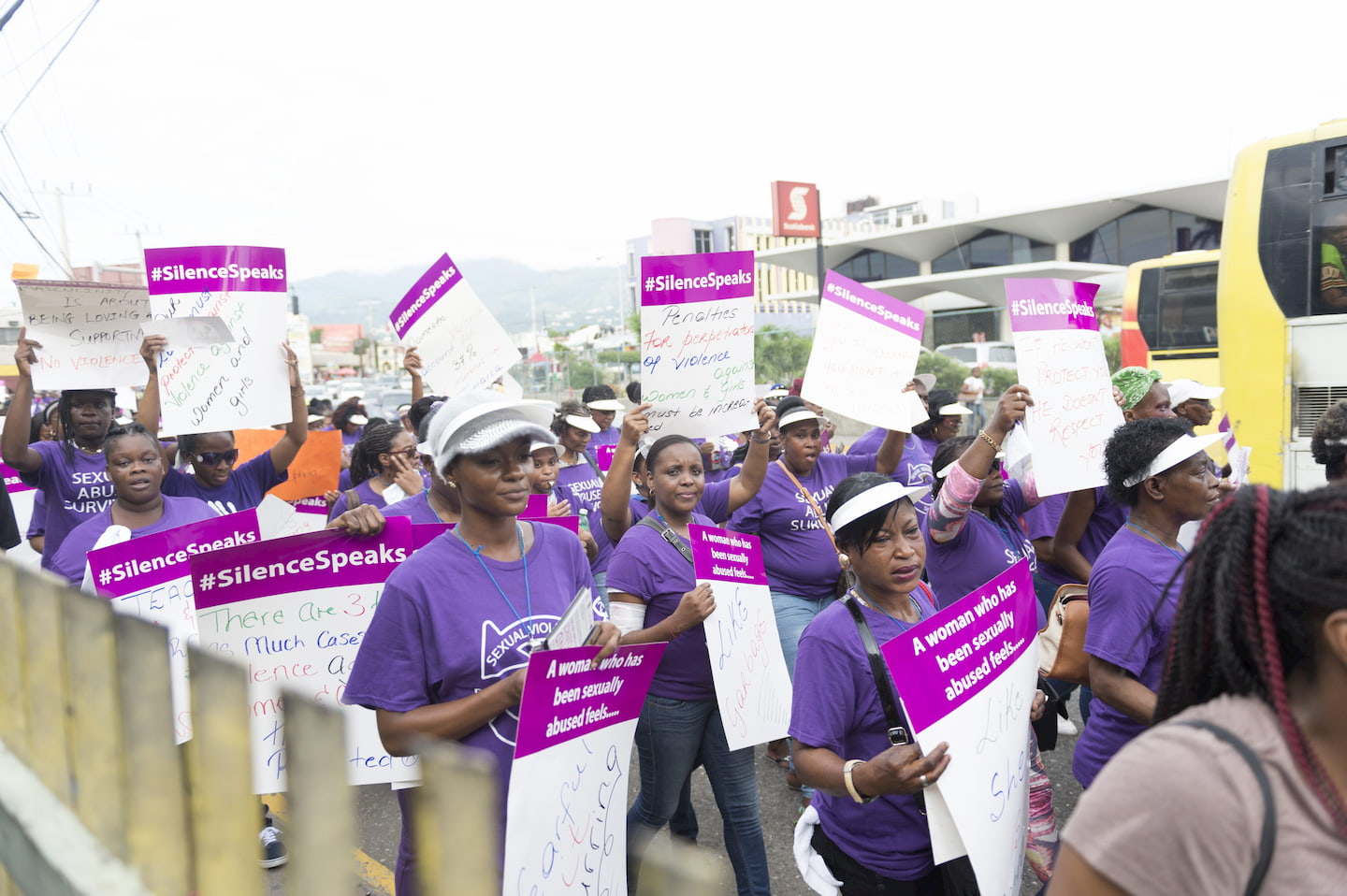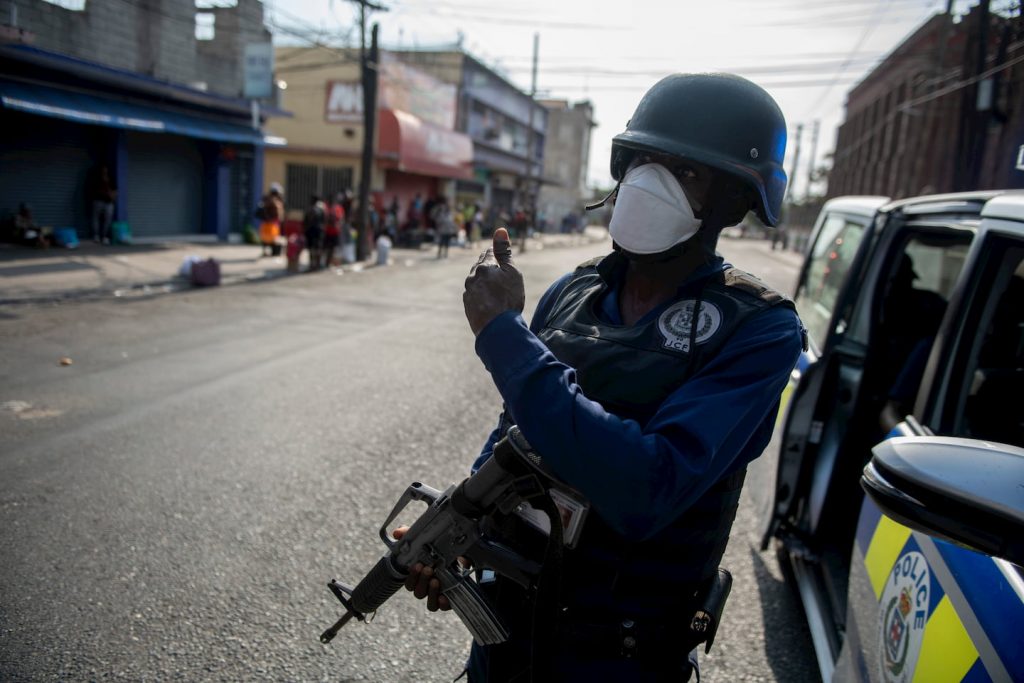The Caribbean is located in the most violent zone in the world. It is not a zone of intimate harmony or partnership. In two pieces of research done on over 400 families, we found 25.3 per cent of youth reporting that their parents fight. This finding strongly supports the UN Women report that 28 per cent of Jamaican women have experienced intimate partner violence over their lifetime.
Since the year 2000, an average of 118 females have died yearly in Jamaica. Just under 10 per cent of this number would be girls (under age 18 years). Overall women and girls only account for 9.4 per cent of all homicide and less than 25 per cent of this number is intimate partner violence (and this number includes male and female perpetrators). This means that intimate partner violence against women accounts for about 2 per cent of all our murders.
Does this mean that when women die in Jamaica at the hands of men that we ignore the campaigns and cries associated? No.
While I have encouraged that we look at the entire occurrence of violence in Jamaica as they are all connected, I cannot help but appreciate the campaigns associated with the deaths of women, especially in the domestic sphere.
Here are five core reasons why Jamaicans and the international community make more fuss when women are killed compared to when this happens to men.
- Violence is very graphic and Jamaica is very violent. The homicide rate for Jamaican women is 9 per 100,000, but this is six times higher than the world’s average (1.6).
- In a country with a demographic majority of black people, whose ancestors had endured slavery, it is logical that the death of women would trigger a moral panic. It should not be surprising that Jamaica has more than twice the proportion of ‘mother only’ households than the average for the world. According to data from the 2014 Survey of Living Conditions, more than a third of our children have neither a biological father nor a father figure. It means that even beyond the expectations of nature, we are expected to go to extreme lengths to protect our women and girls.
- Women as ‘replicators’ are very important to reproduction and the survival of the species. They have an average of 35 reproductive years. Men are less limited and can produce thousands of offspring. Given the fact that women can have a limited amount of children, and are primarily responsible for their survival, the species invest heavily in the survival of women. This is why one of the first rules in the game of war is the protection of women and children. They are responsible for the replacement of the fallen.
- While female deaths follow the trajectory of male deaths – and thus we have to solve male-on-male violence to ultimately reduce violence against women – women do not equally participate in men’s wars. Women are therefore disproportionate victims of war. To be precise, seven out of every 10 women who die in Jamaica are a result of gang and other wars among men – and of this number only two are usually directly involved in the war. This means that half of the women who die in Jamaica were simply ‘minding their own business’.
- Violence against women starts the cycle of violence. About 85% of girls who are tortured and/or raped are expected to transfer this aggression onto others – especially their children. Check any data set, about 75-85 per cent of mothers and teachers who abuse children were abused. Abused children transfer the aggression onto other children (bullying), and then later onto their partners and children. It is a bad idea to facilitate or encourage in any way the abuse of women and girls on the basis that they are the primary nurturers.
Recently one of my colleagues asked: “Herbs, I know that we cannot solve the battering of our women without solving what is happening to our men. I hear you. However, what are some of the things that we can do to help women somewhat until we bring down the entire problem of social violence?”
Here was my response. These come from my observations over three decades, working across seven countries.
- Address the entire frame of domestic violence in your home and community. All the families and kin within a community are connected, and so when conflict arises among any group it can culminate with physical violence against women. Intimate partner violence comprises less than one-sixth of total domestic violence, but is often the result of or the trigger for other forms. Remember that domestic violence includes all the conflict, neglect or abuse within a home space among family and kin. The main rifts within the domestic sphere are between employed and unemployed siblings, children and members of the extended family, and partners. However, when mothers (the centre) are abused in the home, in ranked order, the son, sibling and nephews also get involved.
- Manage money issues before they escalate. Seventy per cent (70%) of all domestic conflicts are about money. This is three times more important a source of conflict than ‘cheating’. In three different research projects across the Caribbean, we found that intimate violence increases when crops are over. During the crop women overlook men’s wasteful habits, including gambling; but when the lean period comes and women try to manage the scarce resources to ensure the survivability of the children conflict arises, especially if she is not equally employed as the man. It is prudent for mothers to gain employment in some way. If a woman has to be unemployed (for whatever reason) there must be a contractual understanding of the value of her domestic input. Too many men think that ‘stay-at-home’ moms are actually equivalent to a helper. On the other hand, if the man loses his job, there needs to be a discussion about how the family will survive until he regains employment. In five research projects in Jamaica, Belize and Trinidad we have discovered that a man is allowed to be unemployed for six months before the ‘war’ starts. Caribbean women taught my research team that after six months of unemployment a man becomes a ‘half-a-man’. This forces the woman to seek a ‘whole-a-man’ to address the crushing poverty. The ‘half-a-man’ then goes to war with the ‘whole-a-man’ and/or the woman. Paradoxically, two-thirds of the women who sought the ‘whole-a-man’ to replace or complement the ‘half-a-man’ end up with a ‘quarter-man’. When this happens, it makes the conflict near-irreparable, as the ‘half-a-man’ feels severely disrespected to be replaced by a ‘quarter-man’. However, women explain that the desperate rush to find a supporting man often robs them of ‘better judgement’. In 2019 we had 11 cases at Fathers Incorporated at The University of the West Indies in which the men became unemployed. We were able to sit as a team to examine the options both parents have to keep the children in school. We ask that social support groups become more preventative in their approach to assisting struggling families.
- Establish partnership. Within the Caribbean home space, the mother has the most power. We know this because our research shows that she makes 56 per cent of all the decisions related to the household; compared to 26 per cent by the father. Only 18 per cent of homes enjoy the benefits of partnership. Even in settings where a father is present, the data says that the mother in most cases still makes the final decision. Note, however, that homes with an established and contractual partnership have the least intimate partner violence. Let me illustrate. In the studies covering 420 families, we found among the 25 per cent experiencing intimate partner violence were co-resident couples and visiting parents. In the settings where the mother makes the decision while the father is present, 44 per cent had conflicts that end in physical violence. In these settings, the man earns the bulk of the money and the mother makes the bulk of the decisions. The use of money, suspicions of infidelity, and power struggles are the prime factors for conflict. Homes, where employed parents make separate decisions about the use of their own monies, were more stable (23 per cent conflict). Note, though, that only 3 per cent of the families that make decisions together about money and the future of children had conflict. These families are not all middle class, are not all cohabiting couples, and do not all have both parents earning. They are, however, characterised by mutual respect.
- Have a detailed history of the family of your partner. Four of five males who batter women come from very violent homes. A quarter are actually from three generations of abusers or victims of abuse. Some relationships escalate rather than grow. Love is not to be so blind. Remember that we form two basic types of intimate relationships – long term and casual. The problem is that a lot of the ones we thought were going to be casual become long term for several reasons including financial and social needs and pregnancy.
- The church. Lighten up on the patriarchy messages, especially the lines related to the submission of women. A more careful read of Ephesians could suggest an encouragement of partnership. Ephesians is not the best book in the Bible to emphasise. Try Isaiah instead, and focus on “The kind of fasting I want is this: remove the chains of oppression, and the yoke of injustice, and let the oppressed go free” (58: 6). In every session I have attended related to intimate partner violence there is a complaint that the church tells battered women to go home and reconcile with the abuser. Clearly, this is irresponsible. Some church leaders also laugh at men when they get battered, and even tell them to be the head and not the tail. Note though that the church is not all bad in this area. I have studied churches in Jamaica, Belize and Trinidad that have helped to reduce violence against women. These have operated on the following frames: 1. Executives of the church who batter a partner immediately loses their post. 2. In cases of intimate conflict, counselling is compulsory for both parties, and where this is clearly not practical, the church regrettably recommends separation. 3. All battered members have access to care at the expense of the church.
- Campaign to end the ‘privacy custom’ related to intimate partner violence. In a study carried out in 2016, we discovered that 87 per cent of persons had intricate details about their battered neighbours. Nonetheless, less than 10 per cent of these inquisitive neighbours used the knowledge to assist the victims. We found the same as we investigated two years of women who were killed. This cultural practice needs to change. It is worth a campaign. If we can set up helplines with small rewards, we could get neighbours to talk. Note that in other countries Jamaicans are among the top informants. However, in these foreign countries incentives are given such as preferential treatment for immigration processing.
Finally, in the same way we have shelters for disasters in each parish, the Government can ask churches with human and physical resources to rescue battered victims. Some churches even have well-developed welfare departments with tangible budgets. This will benefit the church too – as they will get the opportunity to use their welfare to evangelise.
Herbert Gayle, PhD, is an anthropologist of social violence.
Viewpoints is committed to expanding its range of opinions and commentary. Share your views about this or any of our articles. Email feedback to viewpoints@gleanerjm.com.






